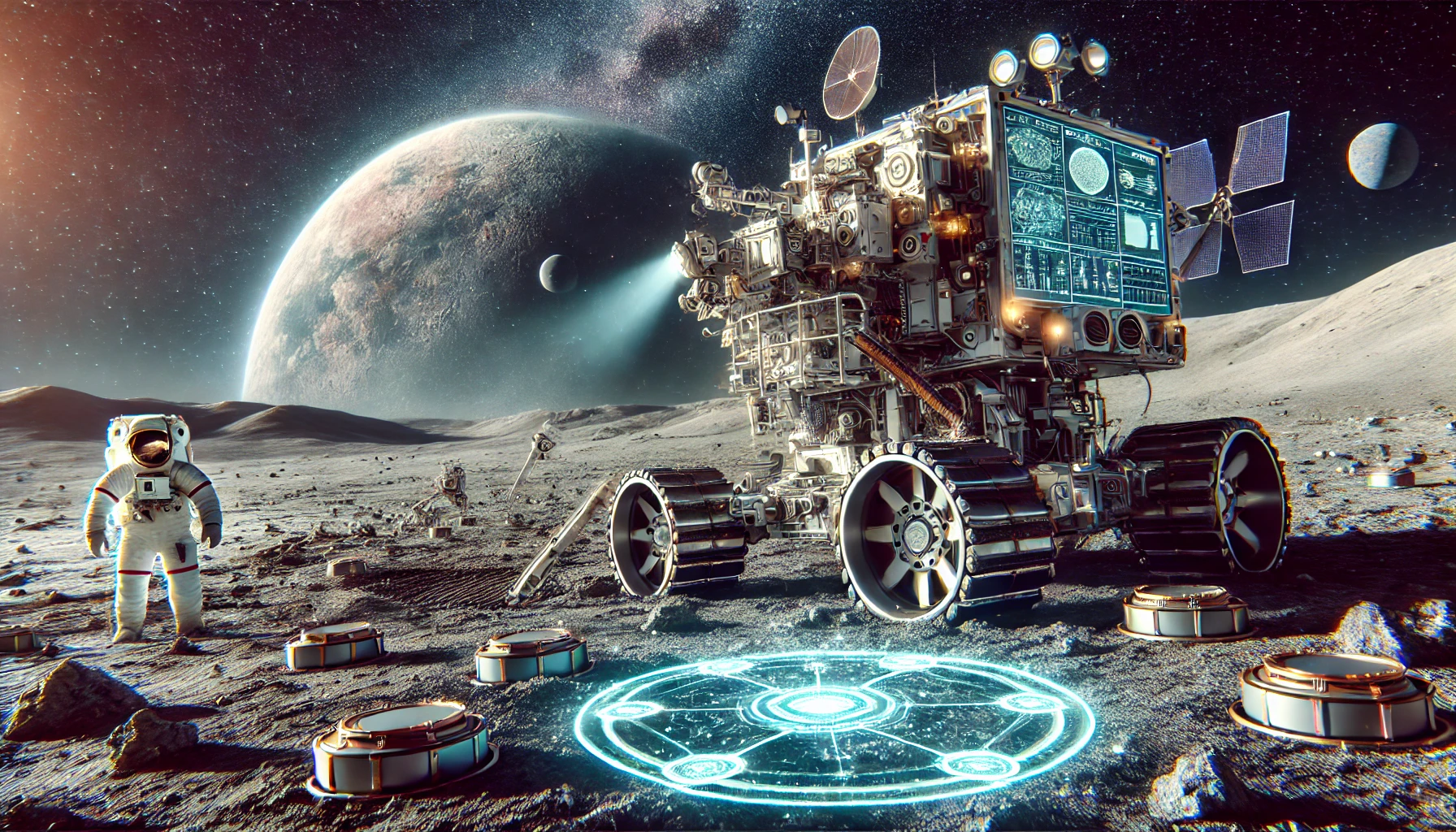The Rise of Robotic Mining: Pioneering Space Resource Extraction

The Rising Importance of Space Mining Robotics
As humanity pushes deeper into space exploration, the potential for extracting valuable resources from the Moon, Mars, and asteroids has sparked global interest. Space mining is no longer the realm of science fiction; advancements in robotics and AI now make autonomous space mining feasible, driving investment from both private firms and government agencies. This opening section will highlight the importance of autonomous space mining robots and introduce the key themes, from sustainability in space to the potential for future interplanetary supply chains, providing a snapshot of the role of robotics in shaping the future of space exploration and commerce.
A Brief History: From Dream to Development in Space Mining
The dream of mining resources beyond Earth traces back to the early days of space exploration, but it wasn’t until recent advancements in robotics and AI that this vision gained traction. Initial moon rovers inspired the current designs of autonomous robots capable of prospecting and even drilling on extraterrestrial bodies. This section delves into the historical trajectory of space mining, exploring notable milestones like the Apollo missions, which brought back lunar samples, and how recent advancements are reshaping our approach. By integrating humor with historical anecdotes—like how initial 'moon buggy' designs evolved into today’s sophisticated robotic miners—this section contextualizes the rapid progress and ambitious goals of modern space mining.
Challenges and Obstacles in Space Mining
Space mining isn’t without significant challenges. Robots face extreme conditions, such as temperature fluctuations, high radiation levels, and zero atmosphere, all of which make autonomous operations difficult. Additionally, autonomous robots need to handle unstructured environments where the unexpected is expected. For example, a sudden rockslide could disable a robot that isn't properly equipped to navigate hazards. Here, we break down these challenges, supported by recent data on survival rates of robotic missions, durability under harsh conditions, and operational sustainability. Statistics on the financial risk underscore the complexity of these missions—space mining companies invest billions in research, with only a fraction of prototypes advancing beyond testing. This section will also discuss unique challenges, like efficient power generation and battery limitations for extended missions, grounding these technical points in real-world context.
Case Studies: Real-World Examples in Robotic Space Mining
A deeper look into current space mining projects showcases the scale and scope of innovation. We examine NASA’s Regolith Advanced Surface Systems Operations Robot (RASSOR), which aims to extract lunar soil, and the European Space Agency’s PROSPECT, designed to assess the Moon’s resources. These robots are tailored to withstand extreme conditions while autonomously navigating uneven terrain. Each case study is supported by recent research on design challenges and outcomes from pilot missions, providing a nuanced look at the ongoing efforts and international collaboration in the space mining race. With data on projected timelines for full deployment and the expected resource yields from lunar operations, these examples highlight both the successes and setbacks of pioneering efforts in this field. Including international perspectives, like Japan's asteroid-sampling missions, enriches the global view of space resource extraction.
Innovative Solutions and Best Practices in Autonomous Space Mining
Facing immense challenges, the field of robotic space mining has seen creative solutions emerge. Companies like Astrobotic and OffWorld are developing modular robots that can operate independently for extended periods, while breakthroughs in AI allow for improved navigation and real-time decision-making without human intervention. This section explores best practices, including power-efficient designs, the use of lightweight yet durable materials, and advanced machine learning algorithms that help robots learn and adapt to their surroundings. By highlighting real-world examples of these strategies in action, such as autonomous energy generation via solar panels and decentralized communication networks for inter-robot coordination, we provide a technical yet accessible view of how these innovative approaches are setting new industry standards. The use of satellite relays for data transmission from lunar surfaces exemplifies the unique ways companies overcome the delay in communication with Earth.
Future Implications: Trends and the Long-Term Impact of Space Mining Robotics
Looking ahead, the field of space mining robotics holds transformative potential across multiple sectors. Beyond space exploration, these technologies could revolutionize industries by providing raw materials like precious metals and potentially even water sources for fuel. This section explores emerging trends, such as the development of 'moon bases' that serve as refueling stations for spacecraft, and the integration of space-mined materials into Earth's supply chains. The potential for creating entirely new economies in space is also discussed, where robotic systems autonomously mine, refine, and prepare resources for both on-planet and off-planet use. Here, we analyze potential societal and technological impacts, including shifts in the global resource market and the prospect of reducing Earth's reliance on finite natural resources. Projections on the timeline for widespread adoption of these practices are grounded in the latest data and forecasts from leading agencies and industry experts, offering a forward-looking perspective on how space mining could reshape human civilization.
Conclusion: Reflecting on the Journey Ahead in Space Mining
In summary, robotic mining is poised to play a foundational role in the future of space exploration and resource management. We recap the article's main insights and consider the broader societal implications of these advancements, from energy independence to environmental sustainability. With each successful robotic mission, humanity steps closer to a future where resources from space could alleviate some of Earth's most pressing resource challenges. Open-ended question: 'What are your thoughts on the rapid advancements in space mining technology? Could this truly change how we view Earth's resources?' Join the discussion on Reddit or Twitter!



